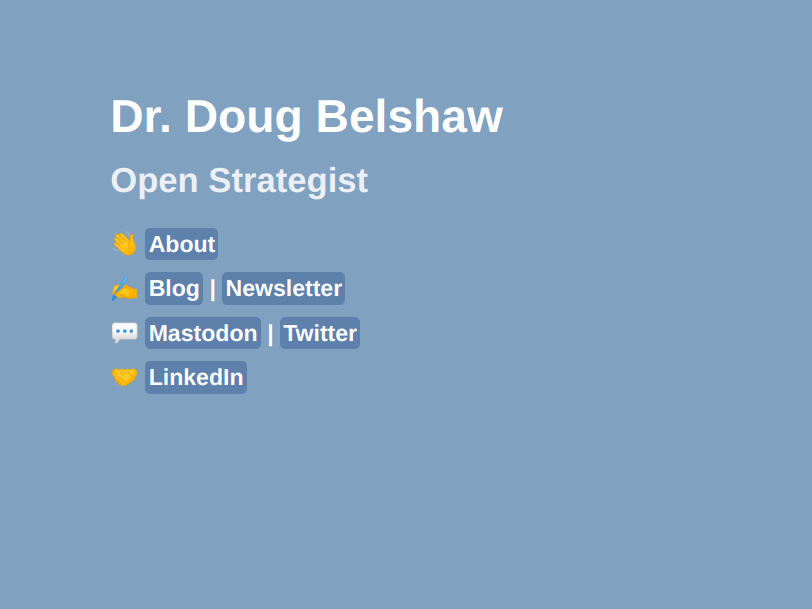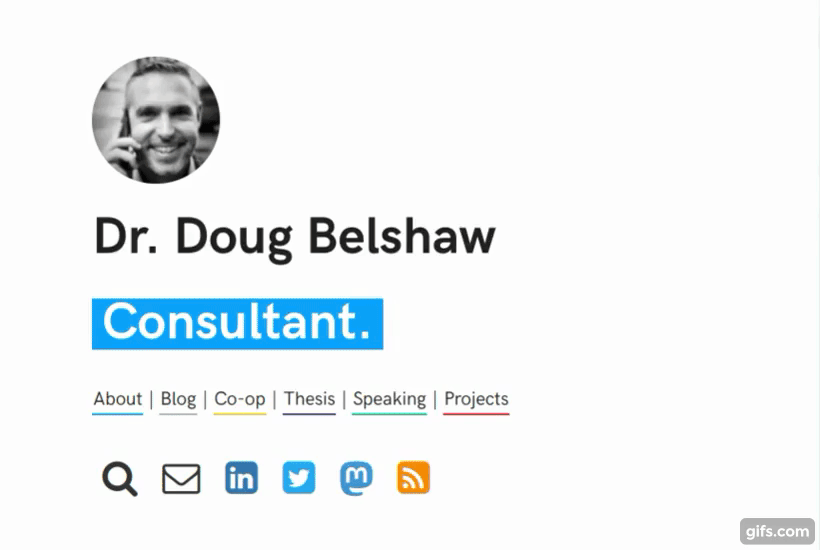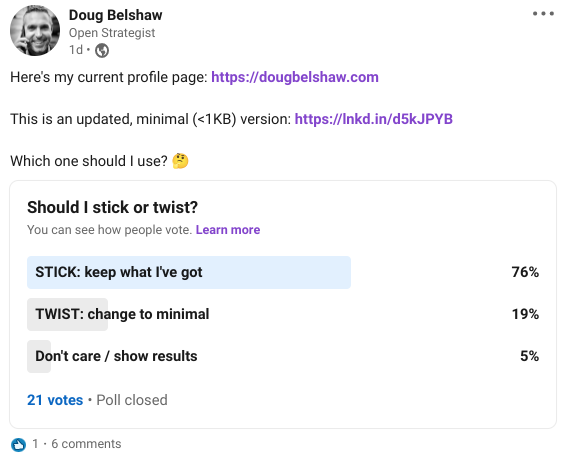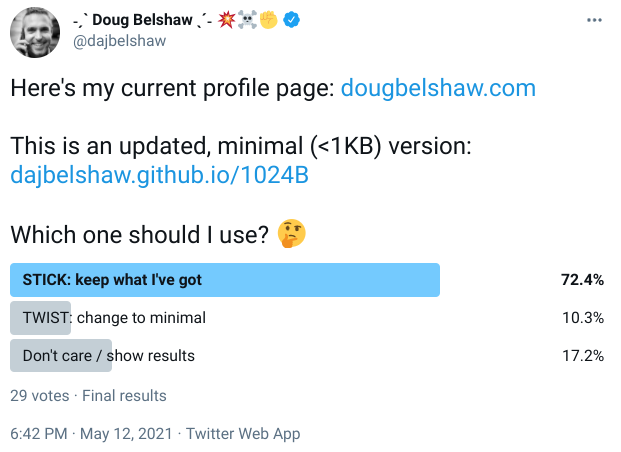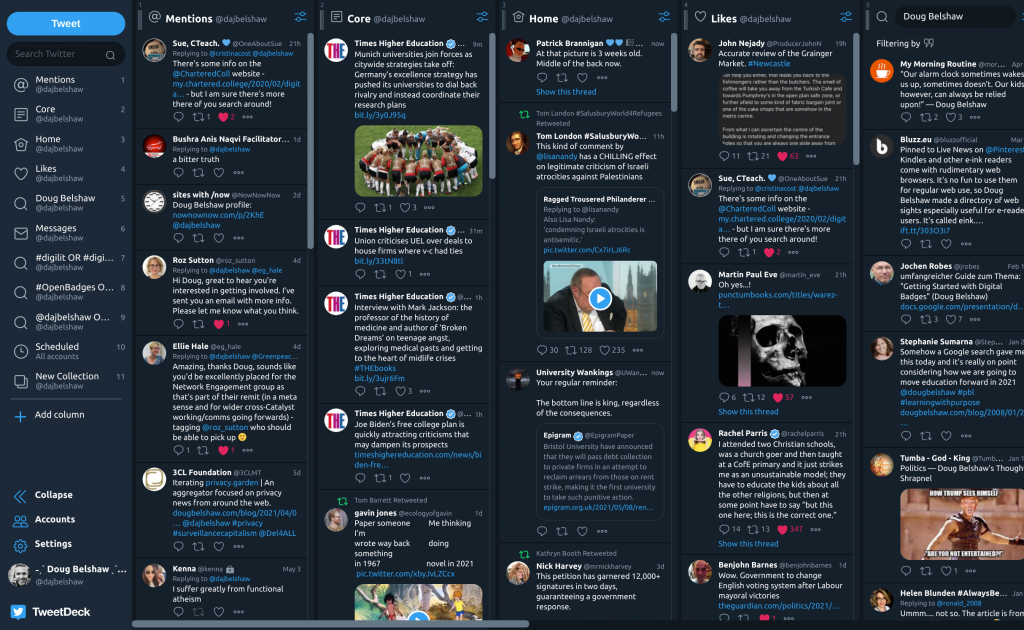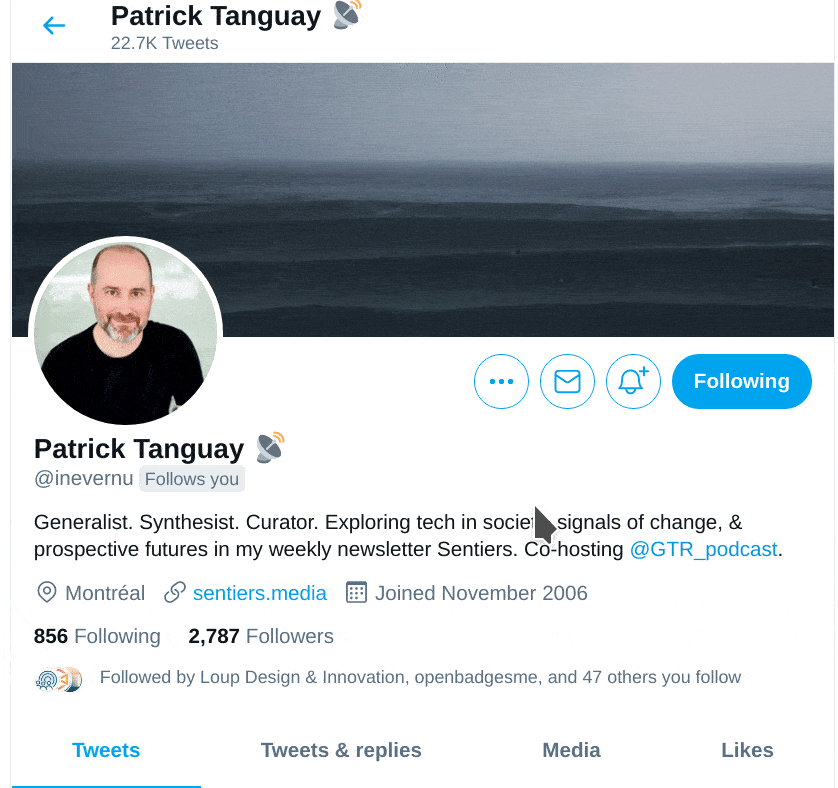Weeknote 19/2021

I’ve been solo parenting for much of this week. While I’m very much aware that many people do this all the time, and that my wife couldn’t have made it easier for me, it has affected my sleep somewhat. Even thought our kids aren’t ‘little’ any more, when I’m solely responsible for them, I can’t help but sleep lightly.
Talking of my wife, the beautiful and talented Mrs Hannah Belshaw, not only is it 21 years to the day since we got together but we also found out today that she’s got her first ‘proper’ contract since leaving teaching. Previously, she’s been working with the co-op and with me on various projects. (It’s worth noting that the term ‘proper’ came from her, not me!)
This week, I’ve been working on a project with Participate which we’re calling Keep Badges Weird, on that Greenpeace project that I still can’t tell you about, and tying up the loose ends on the Catalyst-funded Universal Credit project. I’ve also done some business development and management, including adding stuff to our co-op wiki — some of which you can’t see yet as it’s in draft form for member feedback.
As I mentioned last week, it feels really good to get back into a fitness routine. I’m going to the gym and running on alternating days. One thing that really makes a difference is blocking out 11:30 to 13:00 as the time when I’m doing exercise, going in the shower, and having lunch. I used to do it, pre-pandemic, and it nicely divides my day into two three-hour chunks.
What it does mean, which some people have commented on, is that I’m wearing my gym or running stuff for any meetings I have in the morning. Thankfully, most of those are with co-op members who don’t really care.
Other than the work I’ve mentioned, my new fitness regime, and the highs/lows of parenting (teenagers really can be be both delightful and ridiculously grumpy!) the only other thing worth mentioning is two blog posts I wrote this week:
- 3 ways to gain control of your Twitter feed — prompted by a post by Aral Balkan about Twitter (the “hell site”) I pointed out some methods to resist the algorithms, which are the things that tend to cause the problems…
- Stick or twist? (dougbelshaw.com) — I recently redesigned my profile page in response to a challenge to make a website <1KB in size. This post is about me testing the result through polls on Mastodon, LinkedIn, and Twitter.
On Sunday, the latest version of my monthly newsletter, Thought Shrapnel, goes out to subscribers. It feels weird not to send it out every week any more, but there was too much overlap with these weeknotes, and it used to take me too long to curate. I have got something brewing around “sitting in ambiguity” which is a phrase I seem to have been using more this year. Perhaps it’s one for my much-neglected ambiguiti.es blog?
Next week, I’m carrying on with the same things as this week. We were due to start work with a new client, but that’s been pushed back. So I may be doing more business development than I’d anticipated. It’s also Laura‘s last week before a much deserved three-week holiday, so we’ll no doubt be trying to get All The Things done, starting with our monthly co-op day on Monday.
One thing I forgot to mention is that the building work that everyone in our local area opposed, but which Tory councillors managed to steer through the planning committees, starts next week. I try not to complain, I really do, but I’m either going to have to wear noise-cancelling earphones during working hours, or head over to my parents’ house to work….
Photo: a deconstructed Cambridge Audio Melomania earbud that I accidentally put through the washing machine last weekend. They’re amazing bits of kit (I bought replacements) but, sadly, not waterproof!

